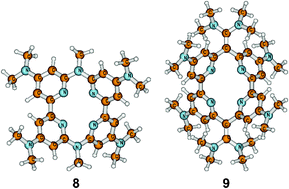Pyridine and s-triazine as building blocks of nonionic organic superbases—a density functional theory B3LYP study†
Abstract
It is shown by reliable DFT B3LYP/6-311+G(2df,p)//B3LYP/6-31G* method that

* Corresponding authors
a
Quantum Organic Chemistry Group, Division of Organic Chemistry and Biochemistry, Rudjer Bošković Institute, Bijenička 54, Zagreb, Croatia
E-mail:
zmaksic@spider.irb.hr
Fax: +385 1 4561118
Tel: +385 1 4561117
b Faculty of Science and Mathematics, Department of Physical Chemistry, The University of Zagreb, Horvatovac 102A, Zagreb, Croatia
It is shown by reliable DFT B3LYP/6-311+G(2df,p)//B3LYP/6-31G* method that

 Please wait while we load your content...
Something went wrong. Try again?
Please wait while we load your content...
Something went wrong. Try again?
I. Despotović, B. Kovačević and Z. B. Maksić, New J. Chem., 2007, 31, 447 DOI: 10.1039/B617914B
To request permission to reproduce material from this article, please go to the Copyright Clearance Center request page.
If you are an author contributing to an RSC publication, you do not need to request permission provided correct acknowledgement is given.
If you are the author of this article, you do not need to request permission to reproduce figures and diagrams provided correct acknowledgement is given. If you want to reproduce the whole article in a third-party publication (excluding your thesis/dissertation for which permission is not required) please go to the Copyright Clearance Center request page.
Read more about how to correctly acknowledge RSC content.
 Fetching data from CrossRef.
Fetching data from CrossRef.
This may take some time to load.
Loading related content
